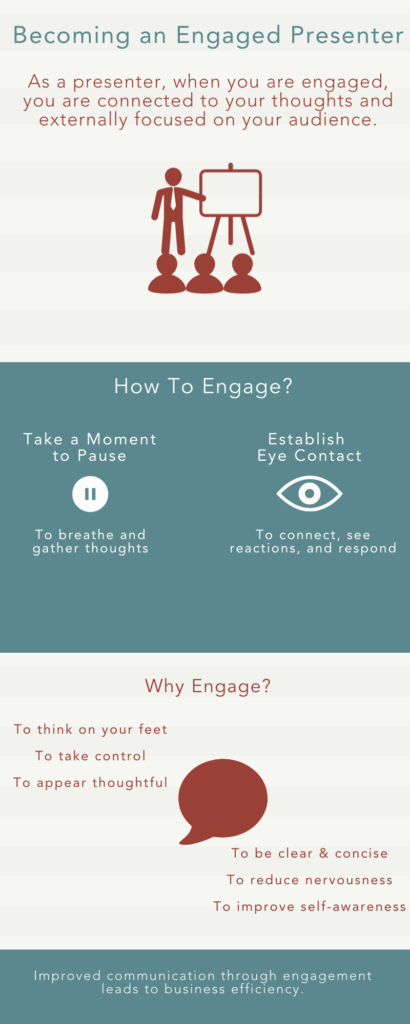
- Greg Owen-Boger Presentations, The Orderly Conversation
As a presenter, when you are engaged in the conversation, you are connected to your thoughts and externally focused on the people you are speaking with.
If you’ve been in business for any length of time, you know that some presenters are NOT engaged in the process. Not only are their presentations hard to listen to, but they also make it difficult to get business done.
Disengagement results in a lot of things: increased nervousness, a fast speaking pace, loss of personality, and extreme self-consciousness are all common. Regardless of how it’s manifested, as a member of their audience, you can sense a presenter’s discomfort. And that pulls you out of the conversation that should be taking place and slows business down.
So what, then, does it mean to be engaged, and how do you achieve it?

As I’m sure you’ve experienced, it’s easy to be engaged at dinner with friends. You enjoy the people you’re speaking with, the conversation is lively, and you have no problem leading portions of the conversation, telling stories, listening, contributing, answering questions, and clarifying.
As the infographic shows, when we’re engaged, we’re externally focused on the people we’re speaking with. We’re able to think on our feet and take control of the conversation. When we’re really clicked in, our self-awareness improves, and we’re able to manage the twists and turns of the conversation.
Two Primary Skills: Pausing and Eye Contact
There are two primary skills we use every day, and we’re so used to them that we don’t even think about them. In everyday conversation, we naturally pause to gather our thoughts, and our breathing is entirely involuntary. Eye contact comes naturally as well. We’re constantly checking in with the people we’re speaking with; we look for their reactions and respond accordingly. This lively give and take is a necessary element to communicating effectively, and we’re able to do it because of these two very basic skills.
Pausing and eye contact must also be used during presentations. But because the stakes are higher and there’s work to be accomplished, they are often inadvertently ignored. This is why it’s important to be intentional about their use. For many, this is easier said than done. But for a disengaged presenter, it’s only through the intentional use of pausing and eye contact that you’ll be able to settle into the conversation and get business done.

